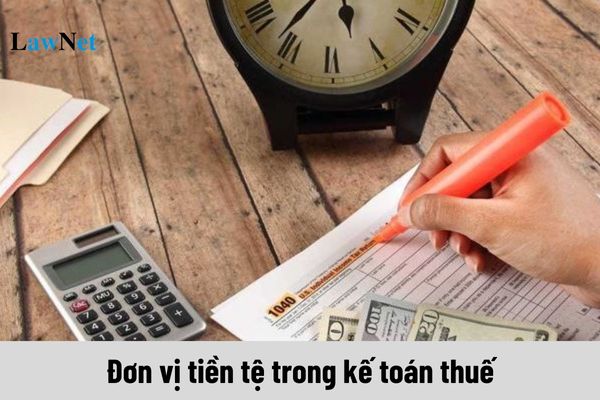What is tax accounting? What are period-based accounting principles in Vietnam?
What is Tax Accounting in Vietnam?
Pursuant to the provisions in Clause 2, Article 3 of Circular 111/2021/TT-BTC, tax accounting is the activity whereby tax authorities at various levels carry out the collection, recording, and presentation of all occurrences concerning tax money that the tax authority must collect, has collected, needs to collect, must refund, has refunded, remains to refund, issues concessions, reductions, suspensions, or write-offs, in the process of conducting professional tax management activities.
According to Article 4 of Circular 111/2021/TT-BTC, the objects of tax accounting include the following items:
- Amounts receivable, received, or remaining to be collected regarding taxes: Reflect the tax monies that the tax authority must collect, has collected, or remains to collect from taxpayers or organizations authorized by the tax authority to collect.
- Amounts payable, paid, or remaining to be refunded as taxes: Reflect the tax monies that the tax authority must refund, has refunded, or remains to refund to taxpayers or organizations authorized by the tax authority.
- Amounts for tax concessions, reductions, suspensions, or write-offs: Reflect the tax monies conceded, reduced, suspended, or written off by the tax authority.

What is tax accounting? What are period-based accounting principles in Vietnam? (Image from the Internet)
How to determine the tax accounting period in Vietnam?
Pursuant to Article 8 of Circular 111/2021/TT-BTC, the tax accounting period is regulated as follows:
Tax Accounting Period
1. The tax accounting period is determined by the calendar year, referred to as the accounting year, which includes 4 characters, specifically:
a) The tax accounting period is calculated from the beginning of January 1 to the end of December 31 of the calendar year.
b) The first tax accounting period for a newly established tax accounting unit is determined from the date the establishment decision takes effect to the end of December 31 of the calendar year.
c) The final tax accounting period of a tax accounting unit when split, merged, consolidated, dissolved is computed from January 1 of the calendar year to the day before the decision for splitting, merging, consolidating, or dissolving the tax accounting unit takes effect.
d) The duration of the first and last tax accounting periods is implemented in accordance with the guidelines of the Accounting Law and documents guiding the implementation.
...
The tax accounting period is determined by the calendar year, referred to as the accounting year, which includes 4 characters. Specifically:
- The tax accounting period is calculated from the beginning of January 1 to the end of December 31 of the calendar year.
- The first tax accounting period for a newly established tax accounting unit is determined from the date the establishment decision takes effect to the end of December 31 of the calendar year.
- The final tax accounting period of a tax accounting unit when split, merged, consolidated, dissolved is computed from January 1 of the calendar year to the day before the decision for splitting, merging, consolidating, or dissolving the tax accounting unit takes effect.
- The duration of the first and last tax accounting periods is implemented according to the Accounting Law 2015 and documents guiding the implementation.
What are period-based accounting principles in Vietnam?
According to Article 8 of Circular 111/2021/TT-BTC, the following principles must be adhered to when recording tax accounting periods:
- The accounting date for tax accounting is determined as the date of record into the tax accounting book within the Tax Accounting Subsystem.
- The collection date of input information for tax accounting must follow the principle of being the same day as the occurrence of tax management transactions or at the latest on the next consecutive day following the occurrence of tax management transactions.
Except on regulated rest days, the information collection day is the next working day after such rest days.
- In the event of adjusting tax management transactions already accounted for in the tax accounting period of the previous year during the time of compiling tax accounting reports, if done before the closing of the tax accounting period, then adjustments can be accounted for in the tax accounting period of the previous year and determined by the accounting year information specified in item 2.
- After closing the tax accounting period, adjustments of figures belonging to the previous year's tax accounting period can only be made upon the request of competent state authorities and according to the provisions in Clause 3, Clause 4, Article 27, and Clause 2, Clause 3, Article 30 of Circular 111/2021/TT-BTC.
How Is the Storage and Provision of Tax Accounting Information and Documents Carried Out?
Based on Article 9 of Circular 111/2021/TT-BTC, the storage and provision of tax accounting information and documents are performed as follows:
(1) Regarding the storage of tax accounting information and documents
- Tax accounting documents include input information for tax accounting, tax accounting vouchers, tax accounting books, tax accounting reports, and other relevant documents related to tax accounting work, which are presented in the form of information in electronic data stored according to legal provisions on accounting.
- Input data before collecting into the Tax Accounting Subsystem is stored on the Taxpayer Obligation Management Subsystem and the tax management business subsystems belonging to the Tax Management Application System as prescribed by the Director General of the General Department of Taxation. The General Department of Taxation is responsible for ensuring storage with accessible capabilities to exploit the origin of input information for tax accounting.
(2) Regarding the provision of tax accounting information and documents
- The provision of information and accounting documents is conducted according to the legal provisions on accounting and tax management law.
- Tax accounting information and documents provided include amounts receivable, received, remaining to be collected, payable, paid, remaining to refund, concessions, reductions, suspensions, or write-offs managed by tax authorities and other related information reflected in the indicators of tax accounting reports.






- What is the currency unit used in tax accounting in Vietnam?
- Which enterprise groups will the General Department of Taxation of Vietnam focus on inspecting and auditing in 2025?
- What are guidelines on online submission of unemployment benefits application in Vietnam in 2025? Are unemployment benefits subject to personal income tax?
- How long can the tax audit period on taxpayers’ premises in Vietnam be extended for complex matters?
- From January 1, 2025, which entities are exempted from ferry service fees from the state budget in Vietnam?
- How to determine VAT applicable to ships sold to foreign organizations in Vietnam?
- What is the maximum penalty for late submission of tax declaration dossiers in Vietnam?
- What is the duty-free allowance on gifts given for humanitarian in Vietnam?
- Are votive papers subject to excise tax up to 70% in Vietnam?
- Shall enterprises use invoices during suspension of operations in Vietnam?

